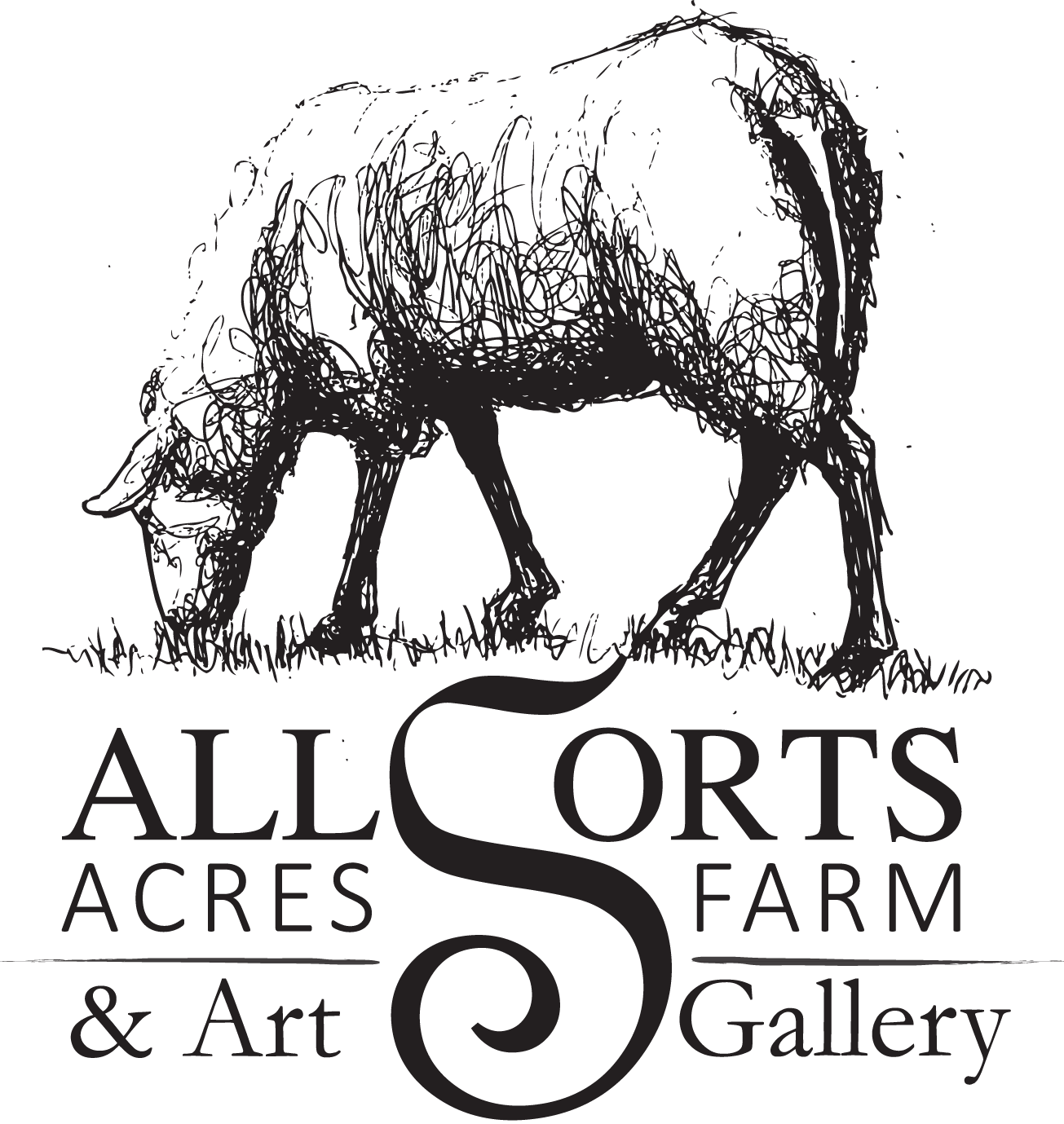This grant enables us to really kickstart a carding mill dedicated to the most common type of wool Canada produces - 29-34 micron wool that has 2.5-3% vegetable matter in it as well as possibly multicoloured, broken, and generally, not suitable for the type of processing we commonly have here in Canada**. For the past 14 years we've been experimenting and exploring how we could use this kind of wool effectively. It's been a long time coming, but, with enormous thanks to Desjardins GoodSpark Fund, we have finally gotten to the next step of realizing our goal of being a circular farm.

Some of our not-yarn quality wool
For many this may come out of left field. For others, they'll recognize that this has been a very long time goal for us. I'll back up a bit.
When Tim and I began this whole farming journey thing in 2007, we thought we wanted goats, to milk, and because, heck, goats are adorable right? Before we had the opportunity to get goats we were offered a couple of Shetland sheep our first autumn on our original little acre. Being free and available, we took the sheep. Heck, they were almost goats, but with wool instead. Little did I know HOW wrong we were. Anyway, our two lovely Shetland sheep, Itchy and Scratchy, were amazing, well mostly. Scratchy was a nutbar afraid of her own shadow, but loveable in her own way. Lambs arrived, and off we were to the sheep races. As spring approached, Itchy and Scratchy needed to be shorn as they hadn't been shorn in a while. The wool was not great. It was long, had a lot of vegetable matter in it, and broken due to lambing (wool stops growing the day of lambing, creating a weak, breakable point in the wool fibre).

Small scale carder
Having never dealt with raw wool before I wasn't sure what to do. I brought it to the local mill. Scratchy's fleece was rejected outright so I brought it home to do something with it myself. She did take Itchy's lovely soft brown fleece. A long time later, I received a very small amount of roving back. I mean VERY little Much of the wool had been lost in processing. ALthough it was exciting to get back our first fleeces from the mill, I was struck how much was lost, and how much was unwanted. It made sense though. The mill specialized in quality yarns. My pathetic fleece just wasn't up to snuff.
This sent me down a rabbit hole of wool processing. I came at this, not as fibre enthusiast (I had never really been that interested in textiles before having sheep), but as a shepherd with some really crappy wool. Oh, and I didn't like, nor could I knit (I still don't). Research began about other ways to use wool from felting to insulation. Year after year, I added more small scale equipment to the farm. Learning about the different types of wool that were out there. How farming, nutrition, health, and the environment affected wool. Generally getting to know all about the material I was using. It also led me to becoming the co-founder of Upper Canada Fibreshed.
 Small scale picker - done by hand
Small scale picker - done by hand
I learned how to wash, dye, pick, card, felt, spin, and weave (still no knitting). Many different breeds and types of sheep have passed through our farm giving me an opportunity to see many varieties of sheep and wool. Some of our wool was stunning, and most was awful. The one constant was that there was always this less than desirable wool that came off every fleece no matter how good. Even our best fleeces has some of this kind of wool.
So, this is where our efforts went. How to use the most plentiful type of wool on the planet. This wool is very useful, just not as clothing. Historically it's been used in industrial and semi-industrial spaces, as well as in the home and garden.

We have already created some interesting unique products. With Tim's experience in product manufacturing and testing we've been able to really begin true commercial prototyping - to a point. We can now get a better idea of the how we can utilize this unwanted, but amazingly useful wool on a commercial level.
So stay tuned! The carding machine will be here, with all the uncertainty around supply chains globally, within 3 months hopefully.
P.S. We did end up getting a goat named Gerty. She had kids. They were awful. Adorable as heck, but horrible to fence in and they beat up our sheep. They ended up on a horse farm as companions. We kept the sheep and added more. Here we are now!
**information from Canada's Campaign for Wool -Wool Plan 2021-2026


1 comment
Congratulations on this exciting news!